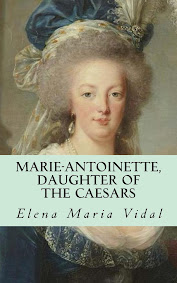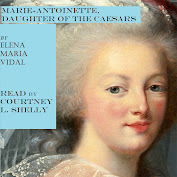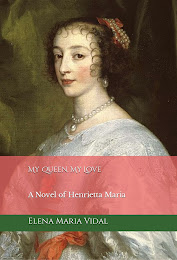Share
Negative assessments of Mary’s qualities as ruler have virtually ignored the dispatches of Thomas Randolph, the English ambassador, who, although sometimes misled by Mary’s statements, usually was aware of her whereabouts. It is interesting that the register has no entries concerning her meetings with the council that Randolph witnessed. In 1561 he named five occasions, for example, when she consulted with the council that are not in the register. While absent, she was likely disposing of other business. On 17 February 1566, for instance, she reported to Sir Robert Melville, another ambassador, that she had just pardoned John Johnston for delivering English funds to her rebels and that, as Randolph was then conferring with her council, she immediately ordered him to leave her realm. His dispatches also reveal her interest in the law.
In 1563 she augmented the stipends of the lords of Session and replaced the old ecclesiastical courts with Edinburgh’s Commissary Court and provincial commissariats. Three years later her appointment of James Balfour of Pittendreich and others to revise Scotland’s laws resulted in the publication of the first complete edition of the acts of parliament, known as the Black Acts, a milestone in the history and use of statutory law.
Another measure of success is the willingness of rulers to be seen dispensing law and order throughout the realm. In her short personal reign, she stayed with 82 hosts in many parts of Scotland. She covered 1,200 miles between August 1562 and September 1563 and travelled extensively thereafter. Furthermore, in 1562, she approved a financial settlement for the Kirk. The holders of Catholic benefices retained two-thirds of their income for their lifetimes, and the crown confiscated the other one-third to cover governmental costs and to support Protestant ministers. This settlement accepted the existence of a two-structured church, one reformed, one Catholic, although priests were still forbidden to say mass except at court....
Leaving James in Bothwell’s and Huntly’s custody, Mary went into secluded mourning. Emerging in late March, she transferred her child to the charge of John, earl of Mar, at Stirling. Meanwhile, Lennox demanded that Darnley’s assailants be tried for murder. Scottish justice still relied on private individuals, especially among the nobility, to obtain remedy usually in the form of money compensation for injuries to their relatives. The privy council established a date for Lennox’s accusation of Bothwell in early April, but when Lennox failed to raise as many troops as Bothwell for the purpose of influencing the assize’s decision, the customary noble procedure, he fled to England, leaving Bothwell to be acquitted, since no evidence was introduced against him.
Bothwell took the opportunity his success offered to persuade some members of a recent parliament, while they were at Ainslie’s Tavern, to sign a band validating his acquittal and proposing that he wed Mary. On 24 April, as she was returning from visiting her son, Bothwell approached her with 800 horsemen, grabbed her bridle, and warned her it was dangerous to continue on to Edinburgh. She dispatched an attendant to alert the citizens who guessed that she was in trouble, but they managed only to fire their cannon as Bothwell’s forces sped by to Dunbar. There, after he raped her, she agreed to wed him. Like many other victims, she felt polluted and refused to reveal the violence for fear of being deemed immodest for speaking of such matters. To protect her honour, she was willing to endure religious and political censure.
That her abduction was opportunistic is indicated by the complication that Bothwell still needed to divorce his wife, Jean Gordon. Although Edinburgh’s Commissary Court granted the divorce, John Hamilton, archbishop of St Andrews, by virtue of his position as papal legate a latere, also annulled their union. Even before their Protestant wedding on 15 May, Mary’s subjects began signing bands that led to another rebellion. In early modern Britain, each female monarch or regent who married encountered strong opposition from her subjects.
Some observers believed that Mary colluded in the abduction because she needed a husband to help her rule Scotland; others charged her with aiding Bothwell in killing her husband. Validating these rumours requires disregarding the statements of the French ambassador in Scotland who claimed after the wedding, which he boycotted, that she never ceased weeping and was overheard contemplating suicide. The major evidence for the charge that she was Bothwell’s adulterous accomplice are the documents contained in a silver chest discovered at Edinburgh Castle, the so-called Casket Letters. As their French originals, if they ever existed, are no longer extant, it is impossible to conclude definitively about their authorship, although it borders on the incredible to believe that a woman, who learned in her childhood to cipher all sensitive correspondence, would have so radically rejected that training. As an English captive, she became famous for her use of ciphers. (Read entire post.)
Tota pulchra es Maria
2 days ago

















4 comments:
There are salient facts of interest leading to the rape. After the dinner held at Ainslee's Tavern on the evening of the close of Parliament, an event which certainly did occur, Bothwell commandeered Marie's Secretary of State William Maitland to accompany him to Seaton where the queen was in seclusion, to present the bond signed by numerous nobles and clergy at the dinner party he hosted. Maitland himself had not signed the bond and was no fan of Bothwell. Bothwell took him to give his visit a patina of credibility, and Maitland went because he was curious. The queen refused Bothwell's proposal in Maitland's presence. Two days later she rode to Stirling to collect her son, and Mar refused to release him. On the way back to Edinburgh, the queen's small entourage was ambushed by Bothwell's large force of Borderers, and she, Maitland and James Melville were taken under guard to Dunbar where the purported rape took place. I disagree with the author's assessment that 'In early modern Britain, each female monarch or regent who married encountered strong opposition from her subjects.' First of all, we are dealing specifically with a British regnant queen, and without quibbling over whether or not 1567 fell in 'early modern times' (usually depicted as after 1603), including late renaissance times, the only regnant queen of Britain to marry was Mary Tudor, who wed a Catholic Spanish Hapsburg king and a traditional enemy of England. She is hardly enough to set a precedent. On the other hand, most citizens of Mary Queen of Scot's day were uneasy with a single woman on the throne. It was not the queen's subjects who were outraged, but the aristocrats and those influence by theEarl of Lennox, the dead king consort's father. Bothwell was vociferously anti-English, and a bully. The queen's half-brother Moray and the protestant lords feared a strong-willed man like James Hepburn would not be satisfied to play the role of consort, and they would be out of power.
Thanks so much for visiting and commenting, Linda! Your insights are appreciated!
I still see claims that she fabricated the rape and was in collusion with Bothwell. But if she had been unprincipled enough to plot with a lover to assassinate a husband, it doesn't make much sense that she would bother with all the trouble of staying Catholic, when she could have made her life much easier by becoming Protestant. I think she is even more maligned than Marie-Antoinette, who isn't accused of being a murderess.
All true. And the fact that Mary sought to annul the marriage to Bothwell as soon as she was able.
Post a Comment